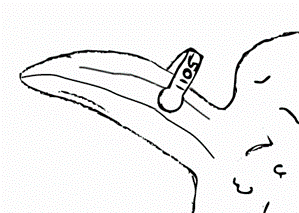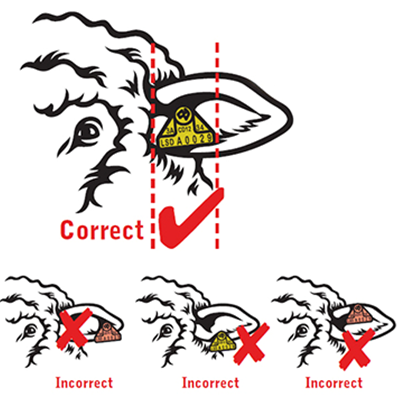
Choose and apply your tags correctly
Dear A. Producer
Thanks for your great question.
With mandatory sheep and goat eID coming into effect nationally on 1 January 2025, it’s important for producers to be tagging their livestock in preparation for the deadline.
When purchasing tags for the first time, producers need to be confident they are choosing species-specific tags for their animals and that they understand how to place the tags correctly. It is important to remember sheep tags for sheep and goat tags for goats.
Choosing your tags
The guide ‘Ordering approved NLIS electronic devices for sheep and goats’ provides all the information you need to ensure you are choosing an approved device for sheep and goats.
If you have a mix of animals you’ve bred on-farm and those you’ve brought onto your property, it’s important to note the difference between breeder and post-breeder tags.
Breeder tags are applied to animals born on your property.
Post-breeder tags are applied to sheep or goats that are no longer on their property of birth or to introduced animals that have lost their original tag.
NB: If you need to apply a post-breeder device to an animal that already has a visual NLIS tag, ensure you leave the property of birth tag in the ear, as well as applying the NLIS post-breeder eID device.
How to tag your animals
Step 1 Secure the animals
- Ensure the animal is restrained securely to minimise movement and ensure accuracy.
Step 2 Tag placement for young animals
- Place the tag on the upper edge of the ear, which is the strongest part.
- Position the tag one-third from the base and two-thirds from the tip (See Fig 1).
- When tagging lambs and kids, ensure the tag is placed to allow the ear room to grow without being restricted. Restricted ear growth may irritate the animal and reduce retention.

(Figure 1: Tag placement lambs and kids)
Step 3 Tag placement for older animals
- If the top of the ear is too thick for the tag pin, apply the tag at the back of the ear (see Fig 2)
- Verify that the pin length is suitable for the sheep or goat before inserting the tag.

(Figure 2: Tag placement for older animals)
Step 4 Insertion
- Insert the pin of the tag from the outside of the ear, so the point is inside the ear once applied.
- Avoid piercing the ridge of cartilage along the top of the ear to prevent deformation and infection.
- Allow the tag to hang 4-5 mm over the edge of the ear when tagging lambs or kids to accommodate ear growth. This margin may need to be larger for breeds with larger ears.
NB: Tags are uniquely designed and must be applied with their own tag applicator, otherwise tag losses can be quite high.
Conduct post-tagging checks
It’s important to make sure you conduct regular checks to ensure tags are in place, not causing issues for the animal or becoming infected. You should also monitor your animals’ behaviour for any signs of discomfort or distress and take action if you identify problems.
What to do if an animal loses a tag
It is not permissible to remove a functioning NLIS tag. If a tag falls out of the animal’s ear, it must be replaced with a new tag before that animal leaves your property.
If that animal was born on your property, it must be replaced with another breeder tag (i.e. a white cattle tag or a coloured tag for sheep and goats).
If the animal was not born on your property, then it must be replaced with a post-breeder tag (i.e. an orange cattle tag or a pink tag for sheep and goats).
If you have the original tag number, you can link it to the new tag. This helps maintain traceability and ensures the animal keeps its lifetime traceable status for market access.
If you have purchased NLIS-approved devices and are having issues with their retention, you can lodge a complaint and ISC will investigate.